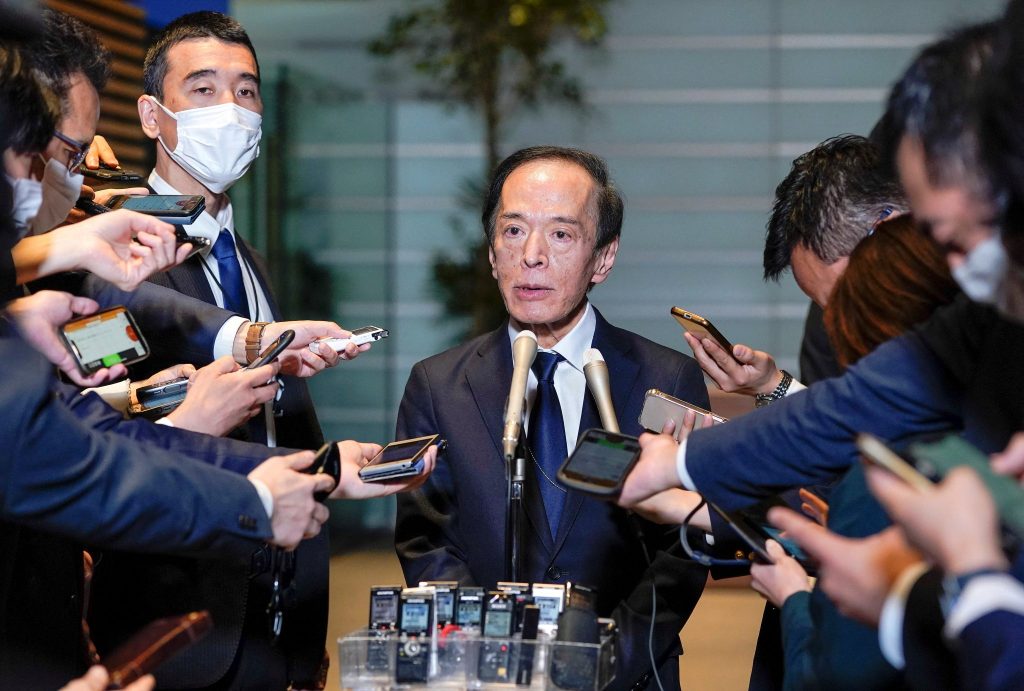Japanese Prime Minister Fumio Kishida announced a new fiscal stimulus program in response to a
fall in his cabinet’s approval rating. The approval rating, which peaked at 59 per cent in June 2022
plunged to its lowest point of 29 per cent in November 2023.
Despite a reshuffle of the cabinet aimed at strengthening female representation, it has proven ineffective in alleviating growing political discontent. Japanese ‘voters have grown increasingly disillusioned with the administration’s ability to address the country’s social and economic woes’. The reason for the political turmoil is higher inflation, which has painfully eroded the purchasing power of Japanese households, as wage increases have consistently lagged behind rising prices.
Kishida asserts that the new fiscal stimulus program — exceeding 17 trillion yen — aims to overcome deflation and put the economy back on track. The package includes temporary tax cuts of 40,000 yen (US$275) per person and payouts of 70,000 yen (US$480) to low-income households. Subsidies for gasoline and utility bills have been provided to dampen consumer price inflation. Together with spending by local governments and state-guaranteed loans, the size of the package amounts to 21.8 trillion yen (US$149 billion). While this initiative focuses on aiding low-income households and the regions outside the economic centres, which have suffered over three decades of stagnation, there are major problems to overcome.
Similar to numerous previous fiscal stimulus programs, the relief will only be short-term. The persistent low-interest rate in Japan keeps paralysing productivity gains of Japanese corporations. The government projects a growth rate of 1.2 per cent between 2023–26. The projection seems far too optimistic, as the fundamental economic problems of Japan, including negative growth and distribution effects of persistent monetary and fiscal expansion, remain unresolved.
Though tax cuts may have a positive impact on consumption, the persistent inflation continues to weaken growth through declining real wages. As the financing of the additional expenditures and lower tax revenues remains unclear, government debt is likely to increase further. With about two-thirds of Kishida’s fiscal stimulus relying on debt-financing, uncertainty about the future macroeconomic policy has increased. The situation could result in decreased consumption and investment.
The global monetary environment has changed. Under former prime minister Shinzo Abe, the combination of expansionary monetary and fiscal policy was sustainable, because other large central banks such as the US Federal Reserve kept interest rates low as well. With the US Federal Reserve continuing to increase the federal funds rate along with the European Central Bank since March 2022, the Bank of Japan is caught on the wrong foot.
If the Bank of Japan were to follow the monetary policy of the US Federal Reserve, the government’s interest rate payments on the immense stock of government debt — equivalent to more than 260 per cent of GDP — would hike. This could lead to blocked expenditure obligations and a further decline in Kishida’s approval ratings. Large valuation losses on the Bank of Japan’s substantial holdings of government bonds could impose an additional burden on taxpayers. This explains why the Bank of Japan continues to stick to its close-to-zero yield curve targeting.
The Bank of Japan’s approach has revived carry trades, allowing investors to raise funds at low costs in Japan and investing them, for instance, in US government bonds. The US Treasury bills with a 10-year maturity yield of 4.23 per cent, compared to the 0.77 per cent of 10-year Japanese government bonds. This has exerted strong depreciative pressure on the Japanese yen, which has lost over 40 per cent of its value since January 2021.
As the US Federal Reserve may keep interest rates high for longer, the depreciative pressure may persist. The continuous rise in the prices of imported goods, including raw materials, would contribute to an increase in energy and food prices.
Kishida faces a delicate situation and may be forced to choose between a Truss or an Erdogan scenario. If the Bank of Japan tightens money supply to strengthen the yen and contain inflation while the Japanese government maintains high deficits, financial markets may lose trust in the sustainability of Japanese government finances. Interest rates on Japanese government bonds could hike, in the same way as the United Kingdom’s interest rates hiked when former United Kingdom prime minister Liz Truss announced tax cuts without sufficient financing, coinciding with the Bank of England raising interest rates.
Alternatively, if the Bank of Japan buys more government bonds, both yen depreciation and inflation would accelerate, reminiscent of Turkey under President Recep Tayyip Erdogan. While the depreciation would benefit large export-oriented Japanese corporations, rising consumer prices would hurt major parts of the population, posing a political problem for Kishida. Facing unappealing scenarios, Kishida can only hope for a financial crisis in the United States that would force the US Federal Reserve to cut interest rates. In this scenario, a revival of Abenomics as ‘Kishidanomics’ could ensue, though Japan’s main economic problems — namely low growth and high inequality — would persist.
Gunther Schnabl is Professor of Economic Policy and International Economics at Leipzig University.


Japanese Prime Minister Fumio Kishida's new fiscal stimulus program, worth over 17 trillion yen, aims to overcome deflation and bolster the struggling economy amid high inflation, but it may only provide short-term relief and increase government debt. With changing global monetary environments, including high interest rates from foreign central banks, Kishida faces delicate decisions between tightening money supply to strengthen the Japanese yen and contain inflation, or buying more government bonds, potentially accelerating both inflation and yen depreciation.